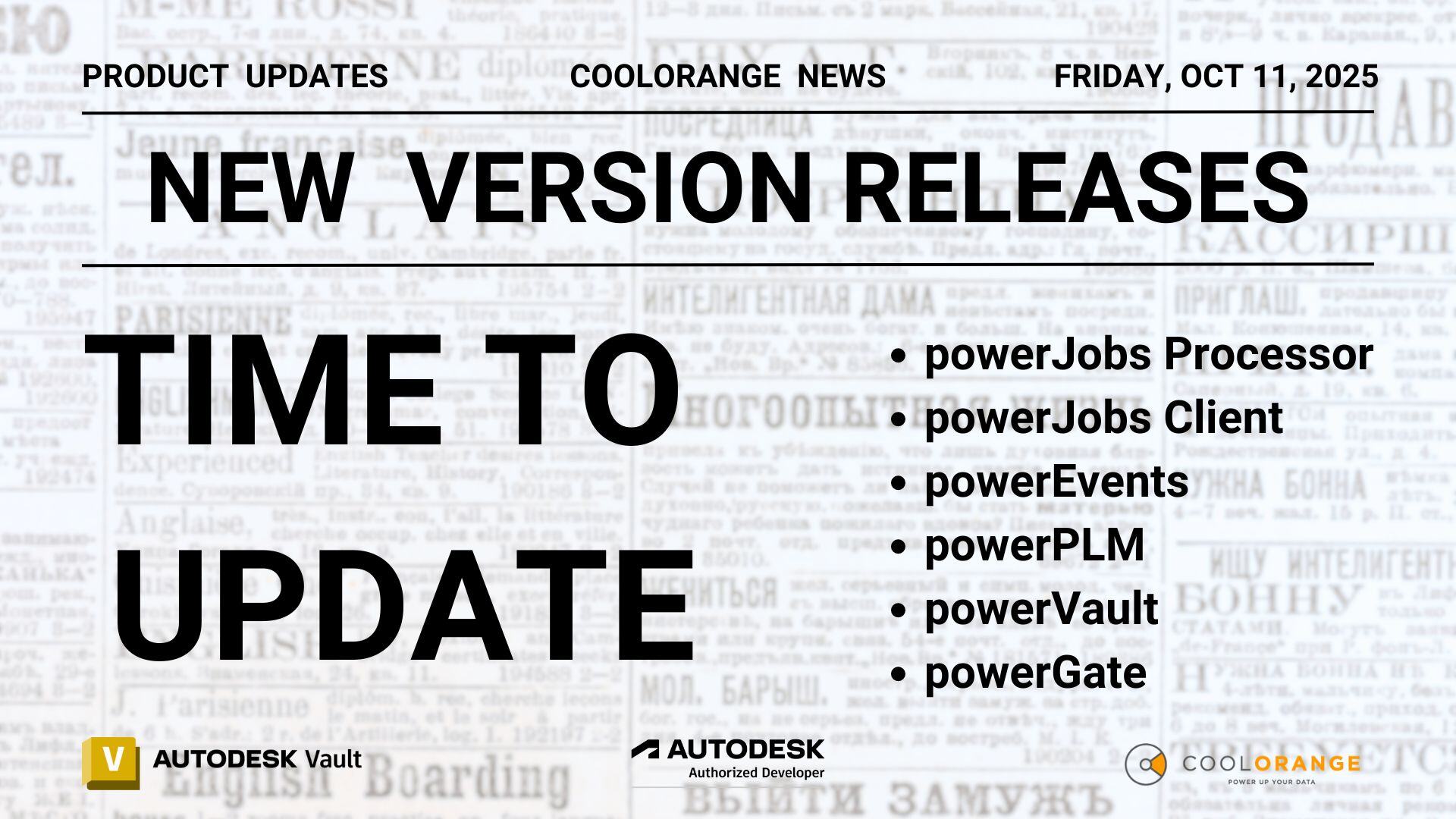Connection & Integration
Handling Raw Materials in Drawings Title Block – Parts List
In the manufacturing industry, precise documentation and representation of Raw Materials are vital for both assembly processes and enterprise planning. A recent technical exploration by our team at COOLORANGE aimed to address discrepancies in how Raw Materials are displayed in different documentation systems, particularly between Bills of Materials (BOMs) and Parts Lists.
The initiative began when it became apparent that Raw Material properties visible in the Vault BOM were not displayed in the Parts List. This led to an analysis to understand why there was a variance and how it could be rectified to ensure consistency across all documentation.
Insights
Traditionally, BOMs treat Raw Materials as distinct items with specific roles within the assembly hierarchy, essential for precise ERP system BOM transfers. On the other hand, Parts Lists, which originated in the era of 2D drafting, often lack this automated structured representation.
Despite these differences, a Parts List could still provide valuable assembly component details, including Raw Material information, provided they are adequately integrated with BOM functionalities.
Innovative Solutions to Enhance Parts List Functionality
As a part of our commitment to continuous innovation at COOLORANGE, we've developed an approach to integrate Raw Material details into Parts Lists, bridging the gap between traditional BOM accuracy and the flexibility of modern 3D assembly documentation. This enhancement was driven by the need to provide comprehensive visibility of Raw Materials across various documentation platforms, a crucial requirement for precise manufacturing and inventory management.
Our solution employs a dynamic 'Insert' feature within the COOLORANGE software, enabling the direct addition of Raw Material details into Parts Lists. This feature simplifies the documentation process by ensuring that each component's Raw Material data is reflected accurately and consistently, parallel to their depiction in BOMs.
This way, users can now manually insert Raw Material specifications into IPTs, which are automatically updated in the Parts List.

This innovative approach not only resolves the discrepancies between the BOM in Vault and the Parts List but also enhances the overall utility of the Parts List in your documentation. By facilitating a seamless flow of information between different documentation systems, we empower manufacturers to maintain a clear and consistent overview of Material specifications, from Inventor to Vault to the ERP system, crucial for optimizing both the assembly process and resource management.
How does it work
1.) Within Inventor, login into Vault and use the COOLORANGE Insert ERP item feature. This allows you to access your ERP system and select items, live from within Autodesk Vault.

2.) From this, you can select an item from the ERP system. Select the quantity, press insert, and this will create/populate iProperties (related to the Raw material inserted) within the open part, making them available to be reflected in the BOM or Parts List.

Note: To have the Raw Materials visible in the Parts list, the Style must be edited and configured to include this property. This is a native feature of Inventor!

3.) When it comes to the BOM powerGate automatically makes sure that this is displayed in the COOLORANGE BOM in Vault and is available to be transferred into the ERP system.
Clarifying Documentation Practices: Disclaimers on BOM and Parts List Integration
1. Explicit Roles and Functionalities of BOMs and Parts Lists
In our commitment to clear communication and accurate documentation at COOLORANGE, it is crucial to set proper expectations for the use of Bills of Materials (BOMs) and Parts Lists. While BOMs are intricately structured for seamless ERP integration, showcasing Raw Materials as "children" within the assembly hierarchy, Parts Lists serve a different function. Originating from 2D drafting practices, Parts Lists provide supplementary material information, presented as a column rather than a structural level. This distinction is vital for users to understand that, though both are crucial, they serve different purposes in the documentation ecosystem.
2. Trustworthiness and Documentation Integrity
For manufacturing operations that rely on precise data transfers to ERP systems, the BOM is the only trustable source. The Parts List, while informative and improved for modern needs, should not be used for critical data transfers but can greatly enhance the drawing documentation with detailed insights like Raw Material specifications. This clarification ensures that all stakeholders maintain correct expectations and rely on the most appropriate documentation tool for specific tasks, thus preserving integrity and trust in our manufacturing processes.
In conclusion, COOLORANGE's innovative approach to integrating Raw Material details into Parts Lists significantly enhances the visibility and accuracy of manufacturing documentation. By bridging the gap between traditional BOM systems and modern 3D documentation methodologies, we ensure a more comprehensive and consistent representation of Raw Material information across all platforms.
The introduction of the dynamic 'Insert' feature in our software, powered by powerGate, not only resolves existing discrepancies but also simplifies the documentation process, allowing for a seamless transfer of material specifications throughout the manufacturing pipeline. This advancement is pivotal in optimizing both assembly processes and resource management, thereby strengthening the overall efficiency and precision of manufacturing operations at COOLORANGE.
Contact us today to integrate COOLORANGE’s innovative solutions for seamless BOM and Parts List management!






